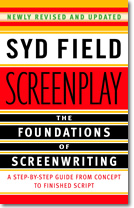Syd Field’s Check Points For Writing A Better Screenplay
Check to:
1. Make sure your characters and story are set up within the first ten pages. Did you introduce your main character(s), establish the dramatic premise, and indicate the dramatic situation, the circumstances surrounding the main character?




